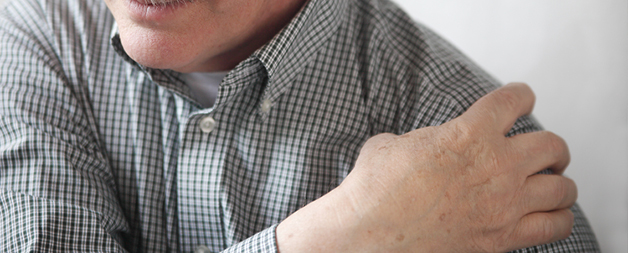
Aching Shoulder Fixes
If you have shoulder pain, you’re likely to go easy on the joint. But stopping normal activities can make shoulder problems worse. The muscles and ligaments around the shoulder will often start to shorten, the shoulder won’t work properly, and you can end up having more pain.
Your shoulder is made up of the collarbone, upper arm bone, and shoulder blade. Gradual wear and tear on this joint makes older adults vulnerable to arthritis as well as problems with the rotator cuff - the group of tendon/muscles that helps you raise and rotate your arm.
Poor mobility or overuse of the joint can lead to inflammation called tendinitis, as well as small tears in the rotator cuff. Inflammation may also occur in the bursa, a small cushion that reduces friction between tendons and bones. Overuse can be as simple as doing regular jobs around the house or a sudden increase in load and activity for a short time, which can increase the risk for tendonitis.
So what’s the fix? 90% of people with shoulder pain respond to simple treatments such as rest and some form of stretching and maybe some strengthening. HBP Group have a high success rate of helping to improve people’s shoulder function so they can avoid ongoing issues with lengthy treatment or surgery.
Generally we will focus on three goals: increasing your range of motion, strengthening the shoulder muscles, and stretching the muscles and ligaments to keep the shoulder held in the right position and moving the right way.
Shoulder extention
- Why: Strengthens the muscles that control the shoulder blade.
- How: Stand with your back against a wall and your arms at your sides. Press your arms against the wall, keeping your elbows straight. Hold for five seconds, then relax. Repeat 10 times.
Overhead stretch
- Why: Keeps shoulder muscles and tendons flexible.
- How: Lie on your back and hold a small towel with both hands, shoulder-width apart. Start with your arms down in front of you, then raise both arms to the ceiling, elbows straight, then lower them backward behind your head (if you were standing, it would look like you were raising your arms above your head), and return your arms to the starting position. Repeat 10 times.
Wall climb
- Why: Stretches shoulder muscles and tendons to keep them flexible.
- How: Stand facing the wall. Place both hands on the wall, then slide your hands up the wall at the same time. As you’re sliding, move closer to the wall and reach up as high as you can. Hold that stretch for 10 seconds, then slowly lower your arms and step back. Repeat 10 times.
Behind the back
- Why: Increases the shoulder’s range of motion.
- How: Place your left hand behind your back, with the back of your hand on your waist or belt. Using your right hand, reach back around your waist and pull on your left hand, lifting it up toward your right armpit. Hold the stretch for 10 seconds, then release. Repeat 10 times, then switch sides and repeat another 10 times.
Side lying rotation
- Why: Strengthens the shoulder muscles.
- How: Lie on your right side and bend your left arm at a 90-degree angle, keeping your elbow against your waist, with your hand pointing forward. Make a fist, then raise it toward the ceiling, still keeping your elbow against your side. Hold for two seconds, then lower slowly and repeat. Do






Comments